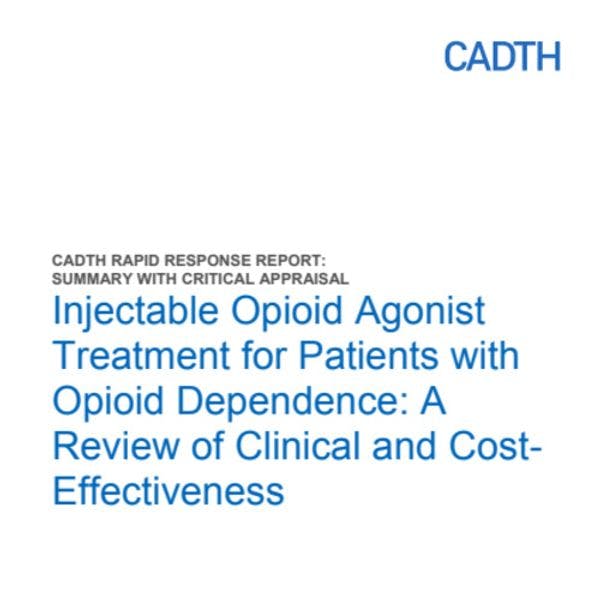Terapia con agonistas opiáceos inyectables para pacientes con dependencia a opioides: Una evaluación de efectividad en términos clínicos y de costos
La Agencia Canadiense para Drogas y Tecnologías en Salud (CADTH) identificó que la diacetilmorfina e hidromorfona inyectables son más efectivas en términos clínicos y de costos que la metadona. Más información, en inglés, está disponible abajo.
By the Canadian Agency for Drugs and Technologies in Health (CADTH)
Summary
Five relevant reports were identified. These comprised one systematic review, two randomized controlled trials (RCT), and two economic evaluations.
One systematic review found that compared to patients treated with other treatments (i.e., methadone, or any other treatment program) those treated with injectable diacetylmorphine (DAM) (with or without the addition of methadone) had statistically significantly greater retention in treatment, reduction in illicit drug use, reduction in criminal activities, and fewer convictions and imprisonments, but no statistically significant difference in mortality and greater occurrence of adverse events.
One RCT showed that injectable hydromorphone (HDM) was not inferior to injectable DAM with respect to days of street opioid use, and proportions of urinalysis positives for street heroin metabolites in urine samples. There were no statistically significant between-group differences with respect to retention to treatment, criminal activity, and physical health and psychological health, however there was statistically significantly higher risk of adverse events related to the intervention in the DAM group compared to the HDM group.
One crossover RCT with 28 patients showed that there was statistically significant improvement after injectable DAM treatment compared to before treatment with respect to anxiety, anger, emotional excitement and well-being, and statistically significantly less heroin craving with injectable DAM compared to injectable placebo.
The results of the economic evaluations, considering a lifetime time horizon and societal perspective, indicated that DAM and HDM treatments each provided more benefits than methadone treatment, and at lower cost for individuals who had previously used other treatment options. Based on incremental cost-effectiveness ratios, it was found that both DAM and HDM dominated methadone. One evaluation reported that the probability of DAM being cost-effective was 76% at a willingness-to-pay (WTP) threshold of $0 per QALY gained, and 95% at a WTP threshold of $100,000 per QALY gained. The second evaluation did not report the WTP threshold.
Findings need to be interpreted with caution, considering the overall limited quantity of evidence, and that the economic evaluations were based on several assumptions.
